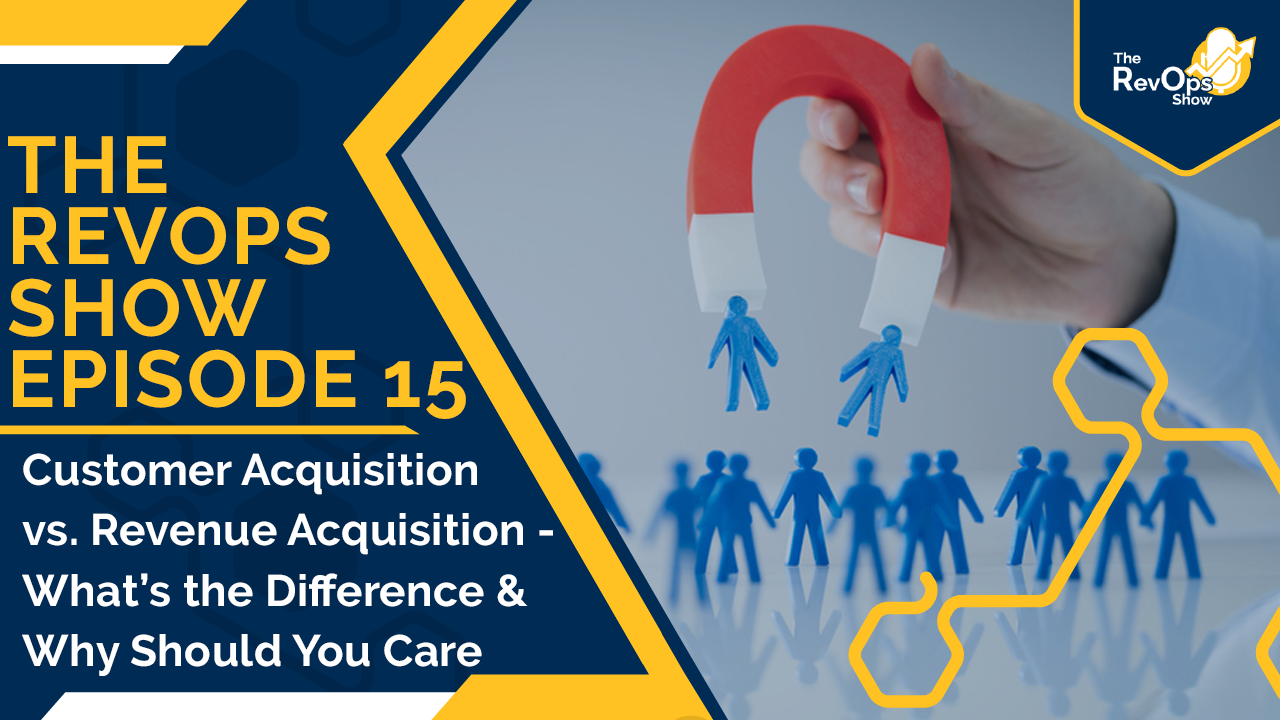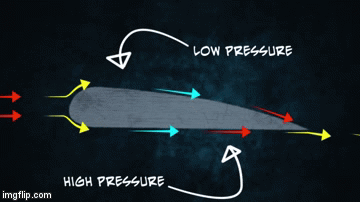Baby Shark, Fight Club, Doug has the soundboard going today! But we’re not here to talk about the soundboard, today Jess and Doug are discussing customer acquisition versus revenue acquisition. What’s the difference? Are they the same thing? Find out in today’s show.
Audio:
Video:

Additional Resources:
Show Notes:
By definition, customer acquisition is acquiring customers and revenue acquisition is acquiring revenue. One of the mistakes or tendencies that people have is they conflate customer acquisition – winning new customers – with winning revenue. A lot of times they are seen as one in the same when they are actually not.
Think of it as engagement acquisition, customer acquisition, and revenue acquisition. Engagement acquisition is acquiring the prospect’s attention and engagement. There’s not a lot out there about the difference between the two, and there’s no one talking about the concept of engagement acquisition.
Here at Imagine we talk about lift all the time. Doug is a big fan of lift and a big fan of the idea of physics. What enables lift? It’s what enables planes to fly. Basically what is means is that the rate of the velocity of the wind above the wing is greater than the velocity of the wind below the wing. It’s a beautiful illustration.

If you think about it that’s where the principle of inbound marketing comes from and why it was so powerful. It brought the attention back to the top of the funnel. To compare to a plane, the wing is intent. Above the wing is before intent and below the wing is after intent. Growth is against gravity. Without lift on your side, the only thing that you have is propulsion which is a huge explosive and dangerous. It’s not sustainable. When you’re not generating lift, you’re actually increasing the gravitational pull against yourself.
When you take the customer acquisition versus revenue acquisition, you begin to look at customer acquisition through the lens of land and revenue acquisition through the lens of expand.
A lot of times the way to increase growth is to simplify the customer acquisition. When you think of the customer as the revenue, then the two are tied together and you tie your hands more. When you separate the two, you begin to have more moving parts that enable you to do different things and approach them from different angles. You gain more choice without actually increasing the complexity factor or the complication factor by as much as you gain choice.
You have to understand the job to be done. A customer is a potential income producing asset. The more potential income producing assets that you have, the more income, the more potential revenue, the more opportunities you have to generate revenue.
Doug also thinks that most businesses have a tendency to pursue new business as opposed to how much they could expand within their existing customer base.
Why is it that there seems to be so much focus on customer acquisition and getting new customers over revenue acquisition?
If you go back to the old days of commerce, there used to be less difference. We came from being transactional to now being in pursuit of recurring. When you go from transactional to recurring, there’s a big shift. The real reason Doug thinks this happens is because customer acquisition is an event while revenue acquisition is an ongoing process. Revenue acquisition is forever; it never ends.
Is there a time where you should focus on customer acquisition? Is there a time where you should focus on revenue acquisition?
All the time.
Should you focus on customer acquisition over revenue acquisition?
Yes. You should always focus on customer acquisition over revenue acquisition, and you should always focus on revenue acquisition over customer acquisition.
All jokes aside that’s kind of a RevOps discipline. You’re looking at it from the top down, from the bottom up and from the side.
The cycle of business is value exploitation, value creation, and value exploitation. If you start seeing trends going against your growth rate, that’s when looking at complimentary products or making an adjustment to the market comes into play. If the goal is to sustain the business, then that’s what you have to look at.
An understanding of the difference between customer acquisition and revenue acquisition can come from opportunity quadrants. There’s four opportunity quadrants. High value customers are split into low growth potential and high growth potential. Low growth potential are those that aren’t going to do anymore business with you. You then have the low value customers split between low growth potential and high growth potential. Your growth accounts are your high value, high growth, and low value, high growth. When you begin to segment that you can determine who to go after. It’s a lot easier to sell to someone that’s a customer than someone who is not.
Defining those quadrants will help you know where you need to focus your efforts and where your shortcomings might be as far as customer acquisition.
Ideal client profiles come to play here, too. Having the ideal client profile indicates the revenue potential of your customers and that’s a piece that the vast majority of companies are missing. If you have an ideal client profile and it isn’t demographic and psychographic you’re nuts. What’s their growth profile? What are the economic conditions? Those things help to understand the world of the customer. By having this type of information you can tell a story and where you should be thinking.
The biggest takeaway here is that customer acquisition and revenue acquisition are two different, distinct things that you need to have strategies for and plan for. You need to focus on both, not just one.
Next Steps:
-
Follow Jess, Doug & Imagine on socials for updates on the show or other insights:
-
Doug Davidoff: Twitter - @dougdavidoff | LinkedIn
-
Jess Cardenas: Twitter - @JessDCardenas | LinkedIn
-
Imagine Business Development: Twitter - @DemandCreator | LinkedIn
-
-
Subscribe to the show on Spotify & Apple Podcasts
-
Check out Let's Play RevOps on Twitch for more commentary on this topic
-
Listen to Episode 16: Stop Building Crappy Reports & Sh!tty Dashboards

.png)
.png)


